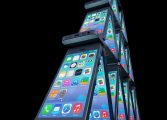Apple Adapter: A Comprehensive Guide to Apples Versatile Accessory

Introduction:
Apple has revolutionized the way we connect and interact with our devices. One of the key components enabling this seamless integration is the Apple Adapter. In this article, we will delve into the in-depth details of Apple adapters, exploring their types, popularity, quantitative measurements, differences between them, and historical advantages and disadvantages. Join us as we unlock the potential of this essential accessory.
A Broad Overview of Apple Adapter

The Apple Adapter is a device that allows users to connect various peripherals and accessories to their Apple devices. Whether it’s charging cables, USB connections, or display outputs, Apple adapters serve as a bridge between your device and the rest of the digital world. With a range of options, they cater to the diverse needs of Apple users.
An Extensive Presentation of Apple Adapter
2.1 Types of Apple Adapter:
Apple offers a wide array of adapters tailored to different connection requirements. Some popular types include:
– Lightning to USB Adapter: This adapter enables users to connect their Apple devices to USB peripherals such as keyboards, cameras, and audio interfaces.
– USB-C to USB Adapter: Designed with the latest USB-C technology, this adapter allows for seamless connectivity between USB-C devices and traditional USB accessories.
– HDMI to Thunderbolt Adapter: With this adapter, users can effortlessly connect their MacBooks or iMacs to external displays with HDMI ports, expanding their workspace or enhancing their entertainment experience.
– MagSafe to MagSafe 2 Adapter: This adapter facilitates compatibility between older MacBook models with MagSafe connectors and the new MagSafe 2 power adapters.
2.2 Popular Apple Adapters:
Among the plethora of options, a few notable Apple adapters have garnered popularity:
– Thunderbolt 3 (USB-C) to Thunderbolt 2 Adapter: This adapter enables users to connect Thunderbolt 3 devices to Thunderbolt 2 displays, providing backward compatibility and versatility.
– USB-C Digital AV Multiport Adapter: With this adapter, users can connect their USB-C equipped MacBook or iPad Pro to an HDMI display, while also offering additional USB-A and USB-C ports, allowing seamless data transfer.
Quantitative Measurements of Apple Adapter
Quantitative measurements play a crucial role in evaluating the performance and capabilities of Apple adapters. Here are a few key metrics to consider:
– Data Transfer Speed: Apple adapters ensure swift and reliable data transfer rates, with USB-C adapters offering speeds of up to 10 Gbps and Thunderbolt adapters offering impressive speeds of up to 40 Gbps.
– Power Output: Apple adapters are designed to provide optimal power output to connected devices. From charging iPhones to powering high-resolution displays, these adapters deliver the required power efficiently and safely.
Discussion on Differentiating Features of Apple Adapter
Apple adapters may seem similar, but they have distinct features that set them apart. These differences can define their compatibility, performance, and overall user experience. Factors that differentiate Apple adapters include:
– Connectivity Ports: Apple adapters offer varying combinations of ports, such as USB, HDMI, Thunderbolt, and more. The availability of different ports determines the versatility and expandability of the adapter.
– Compatibility: Each Apple adapter is tailored to specific devices and generations, ensuring maximum compatibility. For example, some adapters may only work with newer USB-C equipped MacBook models, while others support older Thunderbolt-compatible devices.
Historical Overview of Pros and Cons of Apple Adapter
The evolution of Apple adapters has brought both advantages and disadvantages over time. Let’s explore the historical aspect of these accessories:
– Advantages:
– Enhanced Connectivity: Apple adapters have evolved to support a wide range of peripherals and devices, offering seamless connectivity options to users. This convenience expands the functionality of Apple devices and enhances user productivity.
– Streamlined Design: Apple’s commitment to aesthetics and minimalism is evident in their adapters. Compact and sleek designs not only complement Apple’s devices but also make them portable and easy to carry.
– Disadvantages:
– Additional Expenses: Apple adapters are often sold separately, which means users need to invest extra resources to connect their devices to desired peripherals. This can be a drawback for individuals seeking a more budget-friendly solution.
– Compatibility Limitations: While Apple adapters offer impressive compatibility, they may not cover all possible scenarios. Users may encounter situations where specific peripherals or connections require additional adapters.
Conclusion:
The Apple Adapter is an essential accessory for individuals using Apple devices, offering seamless connectivity and expanding the versatility of their devices. With an extensive range of options, Apple adapters cater to various connection requirements. By understanding their types, quantitative measurements, differentiating features, and historical pros and cons, users can make informed decisions about which adapter best suits their needs. Embrace the power of connectivity with Apple adapters and unlock the potential of your Apple devices.
















































